
In our modern era, a vehicle is synonymous with autonomy, mobility, and freedom. Even in some places, they are essential for moving around or doing certain jobs.
That being the case, we want them always to be in good condition and working, but due to use and various factors, over time, they may begin to present mechanical problems, which, if not treated promptly, can significantly reduce their useful life.
Knowing the most common mechanical problems that vehicles have will help us to be attentive to any signs that may indicate failures of this type, and to review or correct them so that they remain in optimal conditions.
Among them, we find:
Table of Contents
ToggleLow battery
A discharged battery can occur for several reasons, such as leaving the lights, radio, air conditioning, or any electrical element of the vehicle on for a long time without having the engine running; a faulty alternator that does not properly charge the battery; or an aged or damaged battery that can no longer hold an adequate charge.
Because of this, the vehicle may have difficulty starting or may not even start at all. You may also experience problems with electrical systems, such as dim or out lights, non-working windows, and inoperative audio systems.
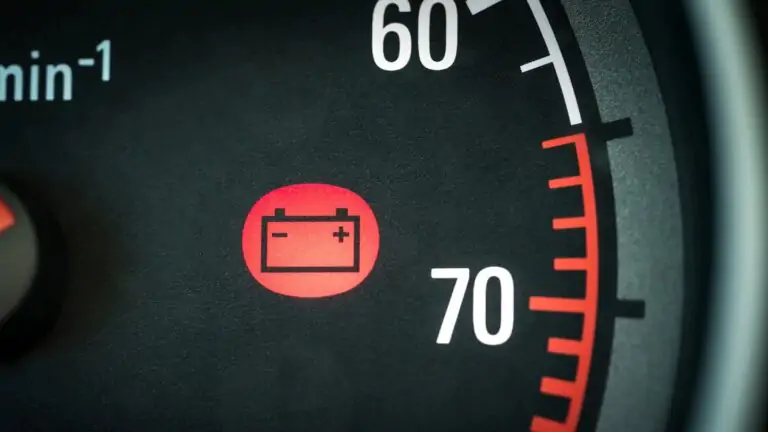
Some of the solutions to this problem may be:
- Jumper cables (jumper cables): A common and quick solution for starting a car with a dead battery. Connect the jumper cables to the discharged battery and a charged battery from another vehicle. Make sure you connect the cables securely (positive to positive and negative to negative) and then try to start the car with the dead battery.
- Battery charger: A battery charger is a good option to charge a discharged battery. This device connects to a power outlet and the vehicle’s battery, supplying a constant electrical current to recharge the battery gradually.
- Battery Replacement: If the battery is damaged or aged, it may need to be replaced with a new one. Batteries have a limited lifespan and, over time, lose their ability to hold an adequate charge to function. If the battery discharges frequently or shows signs of wear, replacing it with a new one is advisable.
If the battery continues to discharge repeatedly after troubleshooting the problem, there could be a problem with the vehicle’s charging system, such as a faulty alternator or damaged wiring. In such cases, taking the car to a mechanic shop for further evaluation and proper repair is advisable.
Worn tires
Worn tires are a common mechanical problem affecting vehicle performance and safety.
Tire wear can occur due to several factors, such as prolonged use, inadequate air pressure, vehicle misalignment, or poor road conditions.
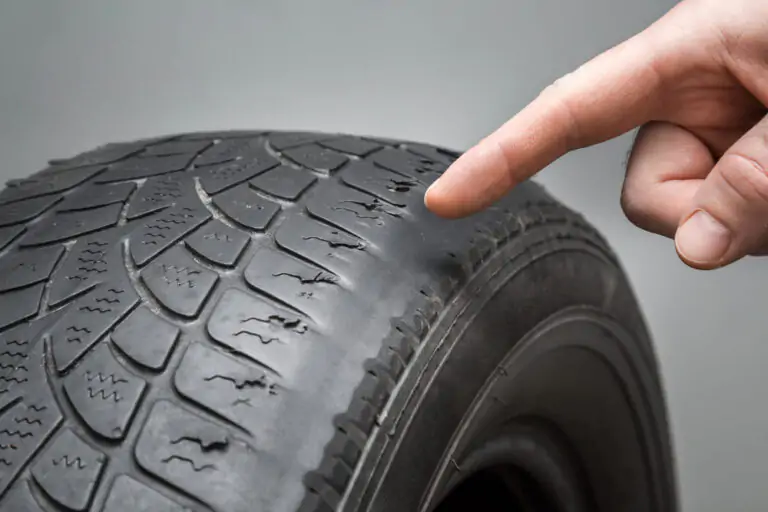
To solve this problem, the following options can be considered:
- Replace tires: If the tires are very worn and have reached their maximum useful life, replacing them with new ones is advisable.
- Tire Rotation: Performing regular tire rotations can help distribute wear more evenly. This involves changing the position of the tires (front to rear and vice versa) to ensure that all tires wear equally.
- Wheel Alignment: If uneven tire wear is due to poor alignment, the vehicle must be taken to a mechanic shop for proper wheel alignment. This will adjust the wheel angles to the manufacturer’s specifications and help prevent uneven wear.
- Maintain adequate pressure: It is vital to regularly check tire pressure and adjust it according to the vehicle manufacturer’s recommendations, as this helps prevent irregular wear and prolongs tire life.
It is important to remember that tires are essential to vehicle safety. As they are the only point of contact between the car and the road, keeping them in good condition and replacing them when necessary is essential to ensure safe driving.
Liquid leaks
Fluid leaks can be a serious mechanical problem and should be addressed immediately to prevent further damage to the vehicle and maintain safe driving.
Fluid leaks can be related to different car systems; each fluid has a specific color and consistency that can help identify the source of the leak.
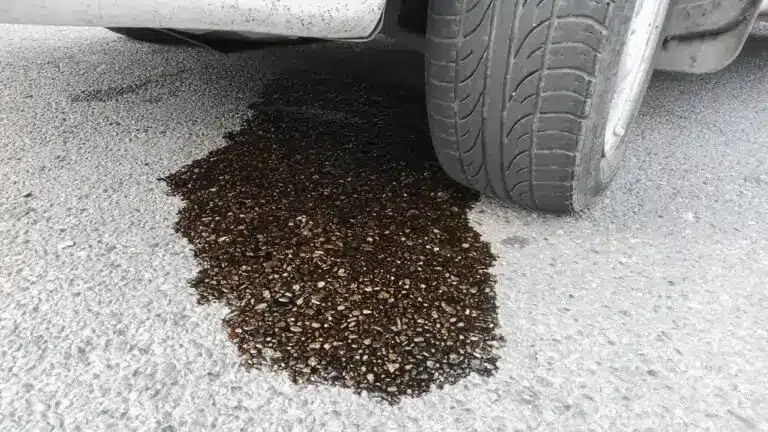
Some of the most common liquids that can leak are:
- Coolant: Coolant is vital for the engine cooling system. A deteriorated hose, a loose clamp, a damaged radiator, or a faulty gasket can cause a coolant leak. When a leak is detected, it is important to stop the vehicle immediately and allow the engine to cool before checking and repairing it. Solutions may include repairing or replacing faulty hoses or gaskets and, in more serious cases, repairing or replacing the radiator.
- Oil: Oil is essential for the proper functioning of the engine. Oil leaks can be caused by a poorly fitted drain plug, a faulty gasket or seal, or excessive wear on internal engine parts. The solution for an oil leak depends on its source. In some cases, replacing the faulty gasket or seal may be necessary, while in other cases it may require a more extensive engine repair.
- Transmission fluid: Transmission fluid is essential for the correct functioning of the gearbox. Faulty gaskets, damaged seals, or a leaking transmission radiator can cause transmission fluid leaks. The solution may involve repairing or replacing affected parts, such as gaskets or the transmission radiator.
- Brake fluid: Brake fluid is crucial for properly functioning the brake system. Deteriorated hoses, damaged brake cylinders, or loose connections can cause brake fluid leaks. It is important to address brake fluid leaks immediately, as they can severely compromise the vehicle’s braking ability. The solution may involve replacing the affected parts and bleeding the brake system.
In all cases of fluid leaks, it is advisable to take the car to a mechanic shop for proper evaluation and repair. It is important to remember that some fluid leaks can be signs of more serious vehicle problems, so it is essential to address them in a timely manner to prevent further damage and ensure safety when driving.
Problems with the brake system
Problems with the brake system are vitally important as they directly affect the ability to stop the vehicle safely.
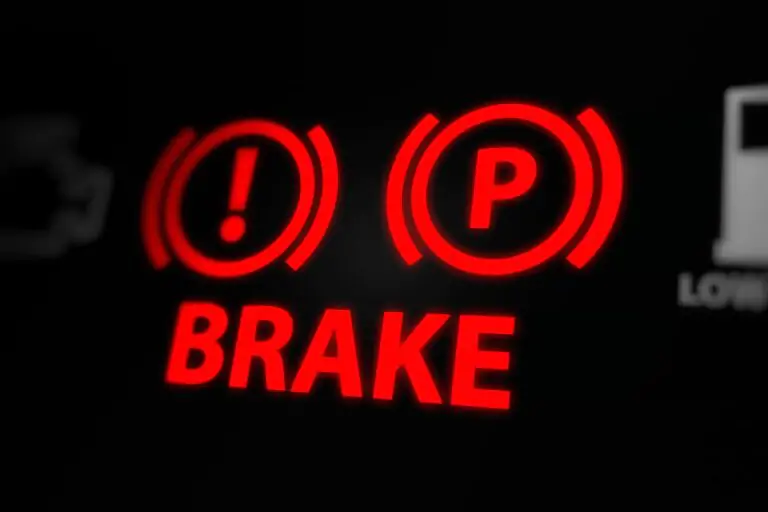
Different reasons can cause these problems and it is essential to address them immediately. Among the causes we find:
- Brake Pad Wear: Brake pads wear out regularly due to friction caused by the pads pressing against the discs or drums. Excessive wear can result in reduced braking capacity and increased braking distance. The solution is to replace the worn pads with new ones.
- Brake fluid leaks: These can occur in brake hoses, connections, or cylinders, which can cause a decrease in pressure in the brake system and negatively affect its performance. The solution to this problem involves identifying and repairing leaks, replacing faulty hoses or cylinders, and bleeding the brake system to remove trapped air.
- Worn or warped brake discs: Brake discs can wear out over time due to the constant friction generated during braking or they can also become warped due to the extreme heat generated during harsh or prolonged braking. This can negatively affect braking ability and cause vibrations or squeals when braking. The solution to this problem involves replacing worn or warped brake discs.
- Problems with the ABS (Anti-lock Braking System): The ABS system prevents the wheels from locking during emergency braking. If the ABS system has problems, you may experience a loss of vehicle control during hard braking. A specialized technician must inspect and repair the ABS system to solve this problem.
It is important to note that the braking system is a vital safety component in a vehicle. If you suspect problems with the brake system, it is recommended that you take the vehicle to a trusted mechanic shop for a thorough inspection and make any necessary repairs. The maintenance and repair of the brake system should not be skimped on since the safety of the driver, passengers, and other road users depends on its correct operation.
Transmission problems
Transmission problems can affect the vehicle’s performance and ability to shift gears.
Some possible causes and solutions for transmission problems are:
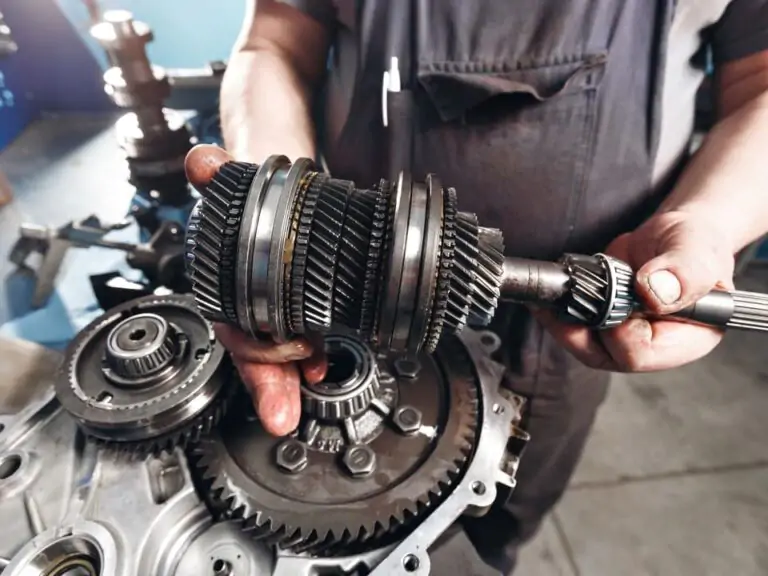
- Low quantity or quality of transmission fluid: Transmission fluid is crucial for lubricating and cooling internal parts. Low fluid or poor quality (from contamination or wear) can cause shifting problems, strange noises, or even total transmission failure. To prevent this, check the fluid level and quality regularly. Refill or replace it as needed.
- Clutch wear or damage: On vehicles with a manual transmission, clutch wear or damage can cause problems when shifting gears. This can manifest as difficulty engaging gears, a slipping clutch, or unusual noises. The solution to this problem may involve replacing the clutch assembly.
- Electronic problems or faulty sensors: Modern transmissions are controlled by electronic systems that monitor and regulate gear shifting. If there are problems with the sensors or transmission electronics, shifting gears smoothly, abruptly, or even locking up a particular gear may be difficult. The solution to this problem requires specialized diagnosis and repair by an automotive technician.
- Wear or damage to internal transmission components: Over time, internal transmission components can become worn or damaged, which can cause shifting problems, vibrations, or abnormal noises. The solution can range from a partial component repair to a complete transmission rebuild or replacement, depending on the extent of the damage.
If your vehicle has any of these problems, it is advisable to go to a trusted mechanical workshop. Regular maintenance and following the manufacturer’s recommendations regarding changing transmission fluid, among other things, will help prevent problems and prolong the life of the transmission.
Overheating problems
Several factors can cause these and are important to address immediately as they can seriously damage the engine and lead to costly breakdowns.
Among the causes of these problems, we find:
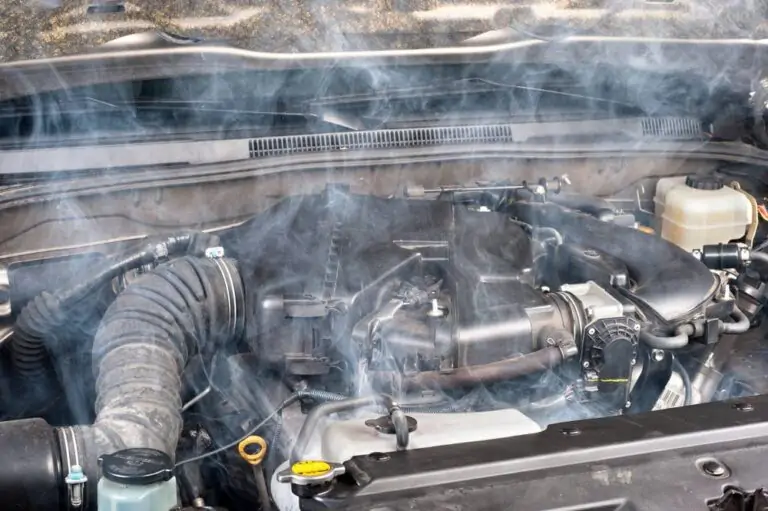
- Lack of coolant: If a coolant leaks or the level is low, the engine can overheat. The solution involves checking the coolant level when the engine is cold and refilling if necessary. If you have any leaks, finding and repairing them is important to avoid future problems.
- Faulty thermostat: The thermostat is a cooling system component that regulates coolant circulation. If it fails in the closed position, it can block coolant flow to the engine and cause overheating. In this case, the best thing to do is to replace the faulty thermostat.
- Clogged Radiator: A clogged radiator hampers heat dissipation, causing engine overheating. Clear debris for effective cooling. To prevent this, carefully clean the radiator to remove any blockages. Regularly cleaning the radiator afterward will help you avoid future overheating issues.
- Faulty radiator fan: The radiator fan is responsible for cooling the radiator and engine. If the fan is not working properly, the motor may overheat in slow traffic situations or high ambient temperatures. In this case, have the fan checked and replace it if necessary.
- Damaged water pump belt: The water pump circulates coolant through the cooling system. A worn or broken belt will disrupt coolant circulation and cause engine overheating. To prevent this, you should replace the belt and check the condition and operation of the pump itself.
Don’t ignore overheating! It could signal a bigger issue like a blown head gasket or cooling system failure. If your engine overheats severely or repeatedly, consult a mechanic for a proper diagnosis.
Neglecting these issues can waste time and money, so consult a mechanic to address potential faults in your vehicle.
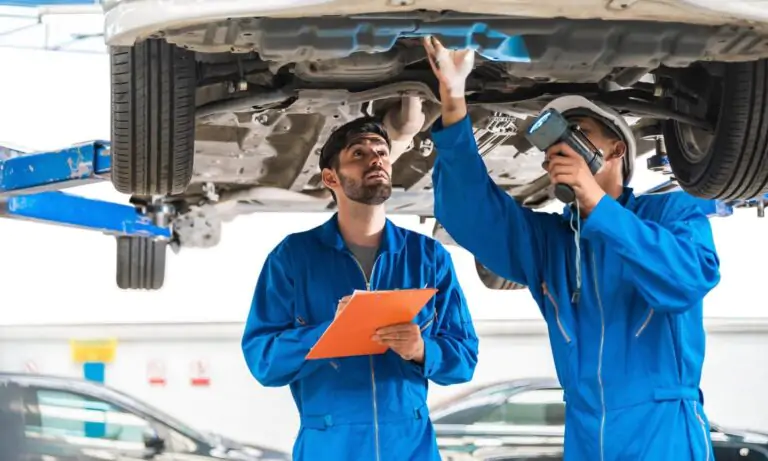
Similar benefits come from regularly maintaining your car. This prevents problems, keeps it running smoothly, and extends its lifespan.
Leave a Reply